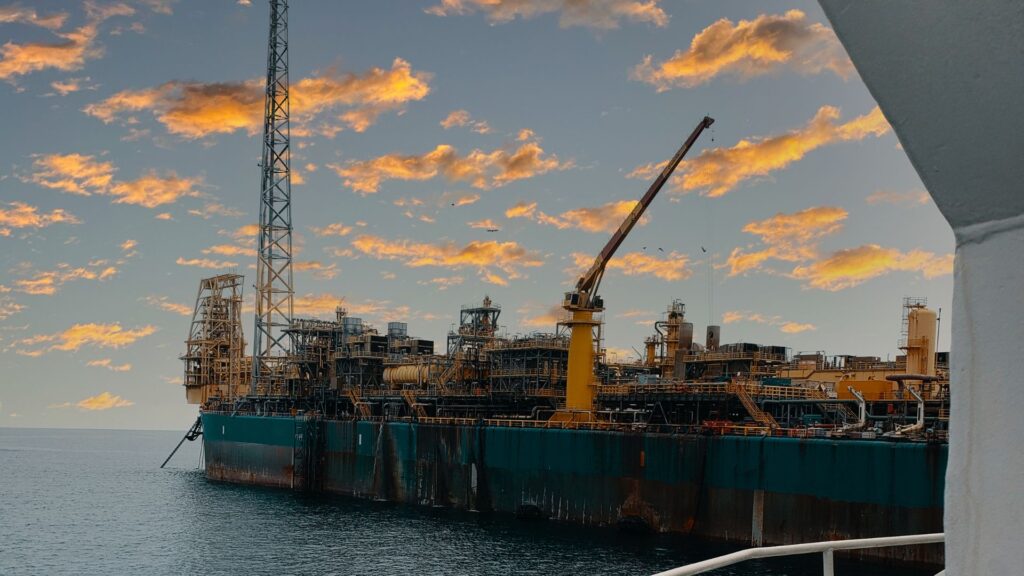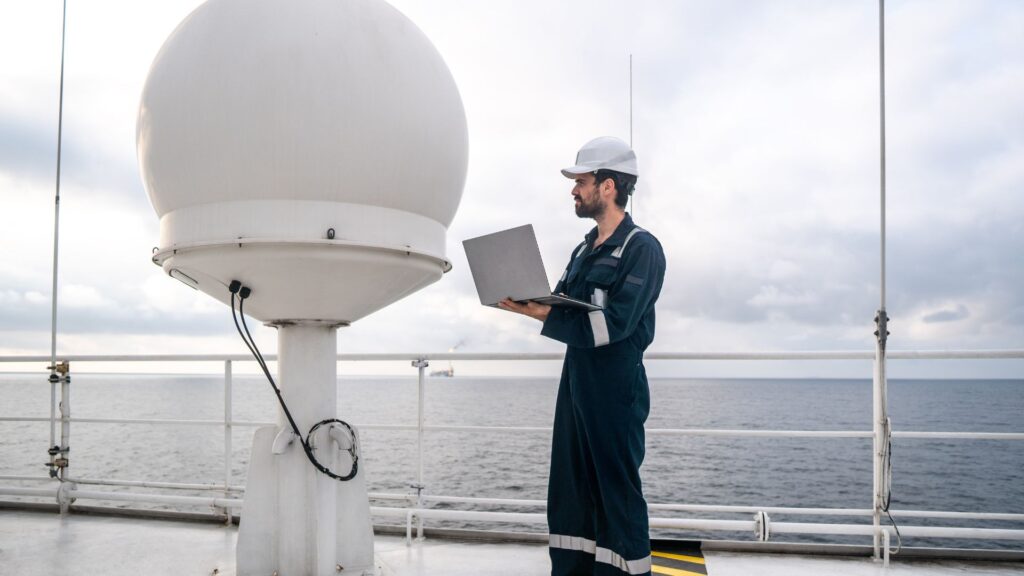Installing VSAT Systems on FPSO Vessels
VSAT systems on FPSO vessels ensure seamless connectivity for data transfer, communication, and operational control. They offer a robust and efficient means of communication, enabling FPSO operators to stay connected with onshore facilities, support vessels, and headquarters around the clock from remote offshore locations.
Let’s explore the significance of installing VSAT systems on FPSO vessels and the key considerations involved in the installation process.

Understanding FPSO Vessels
FPSO vessels are versatile marine structures used in offshore oil and gas production. These vessels are equipped with processing facilities to extract, process, store, and offload hydrocarbons. Unlike traditional fixed platforms, FPSOs are mobile and can be relocated to different offshore fields as required.
Importance of VSAT Systems
In the dynamic environment of offshore operations, reliable communication is essential for safety, efficiency, and productivity. VSAT systems offer several advantages for FPSO vessels:
Continuous Connectivity
VSAT systems provide constant connectivity regardless of the vessel’s location, allowing seamless communication between the FPSO, onshore facilities, support vessels, and remote offices.
High-Speed Data Transfer
With VSAT systems, FPSO operators can transfer large volumes of data, including real-time production data, video feeds, and operational reports, quickly and efficiently.
Voice and Video Communication
The system supports voice and video calls, enabling personnel on board FPSO vessels to communicate with onshore teams, conduct remote inspections, and coordinate emergency response procedures.
Remote Monitoring and Control
VSAT-enabled remote monitoring systems allow operators to oversee critical processes, perform diagnostics, and troubleshoot equipment remotely, reducing the need for on-site interventions.

The installation of VSAT systems on FPSO vessels involves several key steps and considerations.
Survey and Site Assessment
Prior to installation, a comprehensive survey of the vessel’s structure, layout, and existing communication infrastructure is conducted to determine the optimal location for antenna placement and equipment installation.
Antenna Selection and Placement
Selecting the appropriate VSAT antenna size and type is crucial to ensure optimal performance and signal reception. Antennas are typically installed on the vessel’s deck or atop a dedicated mast to minimize obstructions and maximize line-of-sight visibility.
Integration with Onboard Systems
VSAT systems must be integrated with the vessel’s existing communication network, including satellite modems, routers, switches, and onboard computers. Compatibility with existing systems and protocols is essential to ensure seamless operation.
Testing and Commissioning
Once installed, the VSAT system undergoes rigorous testing and commissioning to verify its performance, stability, and reliability under various operating conditions. System parameters such as signal strength, latency, and throughput are fine-tuned to optimize performance.
Training and Support
Crew members and technical personnel receive comprehensive training on operating, maintaining, and troubleshooting the VSAT system. Ongoing technical support and maintenance services are essential to address any issues or performance degradation over time.
The installation of VSAT systems on FPSO vessels represents a significant investment in enhancing connectivity, efficiency, and safety in offshore operations. Therefore, it is important to get the right team on the job!
Team Vivo is an expert group of engineers and technicians, well versed in FPSO industry regulations and compliance requirements. With our streamlined project approach, we can ensure a smooth installation of VSAT systems on FPSO vessels.
